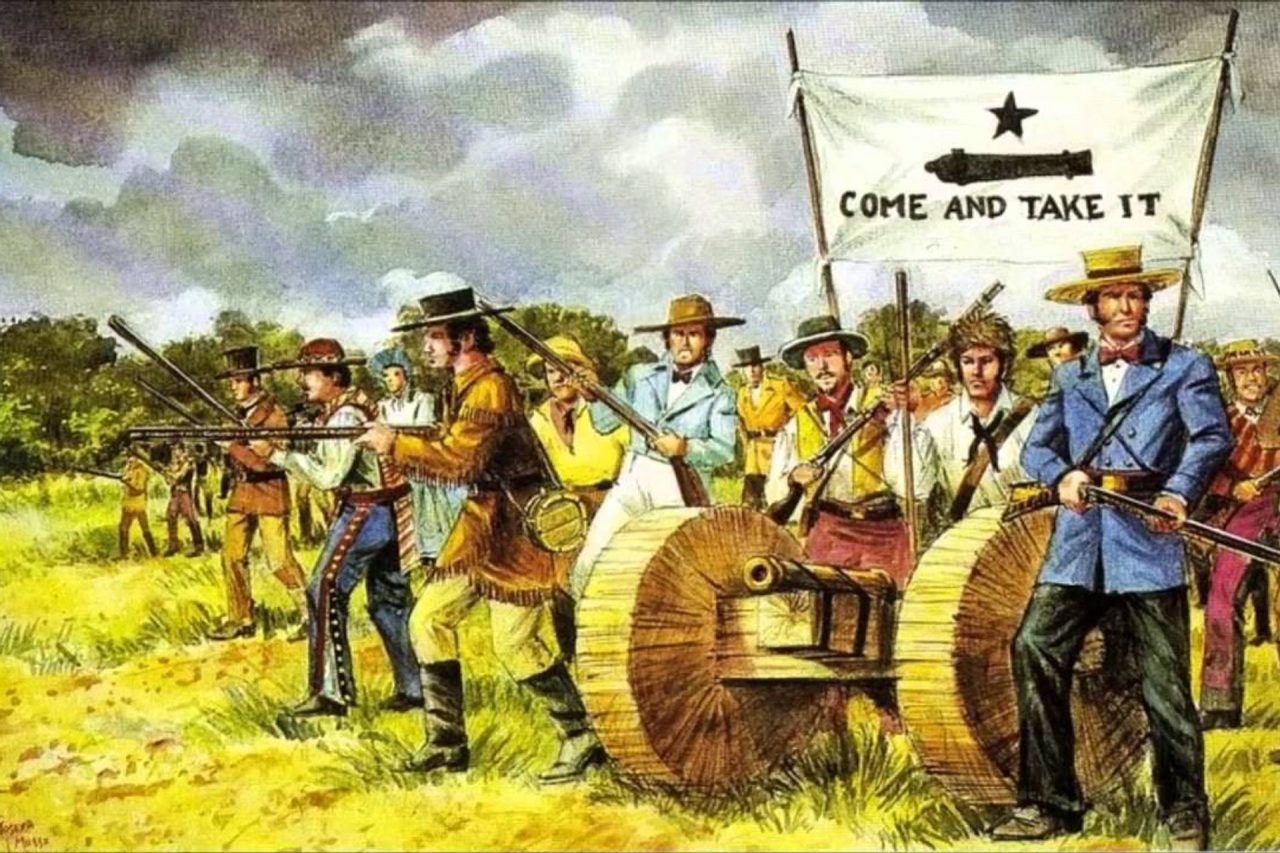Friday, July 19, 2024
Friday, July 12, 2024
Dissertation Overview: Competing Conceptions of Liberty in Early Nineteenth-Century Texas
 In the middle of the Battle of Gonzales,
the captain of a small Mexican company of dragoons called a ceasefire to parlay
with his Texian counterpart. The captain inquired about the Texian motivation
in the battle, specifically why they chose to open fire. The conversation
shifted into politics, however, and both discovered that they were republicans,
and that they equally disliked Santa Anna. The Texian captain implored the young
officer and his men to switch sides and join the fight. That request shattered the
discourse and fighting resumed. The dragoons fell back to San Antonio, and the Texians
claimed victory.
In the middle of the Battle of Gonzales,
the captain of a small Mexican company of dragoons called a ceasefire to parlay
with his Texian counterpart. The captain inquired about the Texian motivation
in the battle, specifically why they chose to open fire. The conversation
shifted into politics, however, and both discovered that they were republicans,
and that they equally disliked Santa Anna. The Texian captain implored the young
officer and his men to switch sides and join the fight. That request shattered the
discourse and fighting resumed. The dragoons fell back to San Antonio, and the Texians
claimed victory.In that conversation, both men
agreed on significant political issues, but came to radically different
conclusions when it came to understanding the purpose of their fight. The
Mexican commander chose loyalty over idealism, demonstrating remarkable fidelity
to his government. To the Anglo, liberty was not a means of political agency,
but an ideal for which it was worthy to fight and die. To the Mexican, liberty was
secondary to loyalty and the honor of fighting for one’s country. Their understanding
of liberty split because of their unique interpretations, leading them to become
enemies in a vicious war, despite the fact that they agreed on major political
principles.
This famous story from the opening
battle of the Texas Revolution begs the question: how can different interpretations
of a single concept inspire revolutionary action? The word liberty is
often used as a synonym for freedom or even independence in
modern American parlance, but in early the 19th century it enjoyed a
much more rigorous debate. The discussion surrounding the interpretation of liberty
received new life in the early 1810s as rebellion broke out across the
North American holdings of the Spanish Empire. Citizens of the empire pushed
for radical social change throughout Mexico, leading to rebellion on the nascent
streets of San Antonio. Spain endeavored to stamp out the cause of liberty
throughout Tejas in the name of the King, leading to a bloodbath that decimate
the population of the revolting province.
Although the Tejanos did not win the
fight for independence from Spain, the cause of liberty would again arise in Texas
at multiple points. Anglo settlers who chafed under the centrist reforms of Santa
Anna armed themselves for battle and waged a six-month war that began at
Gonzales and ended with a Texas victory at San Jacinto. It is easy to say that
the both the Texans and the earlier Tejanos fought for liberty, but there are
very few cultural links that would allow for a shared definition between the
two conflicts. The Anglos arrived in Texas in the 1820s with an Old-World
perception of personal freedom. That understanding informed their notions of government
and influenced their actions with centralizing Mexico. The Tejanos, on the other
hand, represented a fusion of Spanish and Native culture, maintaining a strong
catholic identity that promoted a hierarchical worldview. Individual freedom
did not inspire their choice to rebel against the king.
The interpretations of liberty
in early nineteenth-century Texas are just as diverse as those who took up arms
in multiple conflicts. At this juncture, there is a true need for new
scholarship to analyze these competing conceptions of liberty, and to paint and
intellectual history of the period. Previous research has been largely
political or social, focused primarily on retelling the narrative of the Texas Revolution
from various perspectives. There has even been an increase in military history
in recent years, but little or no work has been done on the history of revolutionary
concepts. Texana scholars have delved into alternative perspectives of the
conflict and have produced rich monographs that add to or challenge the previous
efforts of the mythologizing traditionalists, but none have written a conceptual
history of the era or attempted to analyze the ideas that inspired
revolutionary action in the early decades of the nineteenth-century.
Conceptual history deals with the
evolution of ideas within historical contexts, and the recent digitization of numerous
primary sources makes this an ideal time to begin. For this project, the goal
is to explore the contextual definitions of liberty and analyze its connections
across related historical events. This includes the 1812 efforts of the Gutierrez-Magee
Expedition, the resulting pressure exerted by Spain, the failed rebellions of
other Mexican states and the disastrous efforts of Hayden Edwards and his
Cherokee allies. These events should not be only seen as steps to the Texas Revolution
that was ultimately successful, but as examples of how differing concepts of
liberty can inspire radical actions from those who chose to fight.
-
In the 1920s, Galveston was widely considered by its inhabitants to exist outside the laws of mainland Texas. It was a Gulf kingdom unto i...

